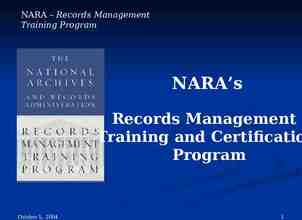Property Taxes and Assessments What You Should Know Dan
21 Slides886.50 KB

Property Taxes and Assessments What You Should Know Dan Schlueter Lassen County Assessor

Areas of Focus: Property Taxes in California Assessor’s Responsibilities Assessment Process Myths vs. Facts 2

3 Major Forms of Taxation in CA Income Tax Sales Tax Tax Property 3

Property Tax Administered locally Based on the value of real property Ad Valorem (according to value) The only form of taxation that provides the taxpayer the opportunity to dispute the base assessments. 4

Assessor’s Responsibilities Locate all taxable property in the county and identify the ownership. Establish a value for all property subject to property taxation, according to applicable laws and rules. List the value of all property on the assessment roll. Applies all legal exemptions and exclusions 5

Myths and Facts Myth: The Assessor makes his own rules and is not subject to oversight. Fact: The Assessor is Governed by the California Constitution, Legislature, and the State Board of Equalization. Fact: The Assessor is subject to periodic compliance audits(surveys) by the State Board of Equalization. 6

Myths and Facts Myth: The Assessor has to assess the property for what I paid for it Fact: The Assessed value is based on Fair Market Value Fact: Assessed value is determined by an appraisal Fact: Nowhere in Prop 13 will you find that purchase price assessed value. 7

Myths and Facts Myth: The Assessor doesn’t adjust values when the market crashes. Fact: We have proactively reviewed and lowered thousands of assessed values in the past several years. Fact: We review market data routinely ensuring equalization and equity among tax payers. 8

EQUITY is the GOAL California law requires that every property within each county be assessed at a uniform percentage of value. When assessment equity exists, it ensures that the tax burden is distributed equally and fairly among ALL taxpayers. 9

Assessment Equity Equity with respect to assessments and real property taxes means: – Properties are assessed at a uniform percentage of value and properties with similar values pay similar taxes – Market Value is defined as what a willing seller will pay a willing buyer in a fair and open real estate market. – Taxpayers pay their FAIR share 10

Presumption of Law: Burden of Proof is on the Taxpayer The assessment is assumed to be correct. The taxpayer MUST present convincing evidence that assessor’s judgment was incorrect. 11

Proposition 13 Passed June 6th 1978 by 2/3 vote. 1 percent tax rate plus local fees etc Allows for a maximum 2% annual increase no matter how much the market increases. Properties are only reassessed upon transfer or addition of new construction. Eliminates the need for cyclical reappraisal 12

Proposition 8 Passed by California voters in 1978, Proposition 8 allows a temporary reduction in assessed value when a property suffers a “decline-in-value”. A “decline-in-value” occurs when the market value of the property as of January 1st(lien date) is lower than its current assessed value. If the market value of your property is determined to be lower than the factored Prop. 13 value, your assessed value will be lowered to the market value. The factor is determined by the California CPI, not to exceed 2%. 13

Proposition 8(cont.) The adjusted value will be reflected on that year’s annual tax bill, which is mailed by the Tax Collector in October of each year. A Prop 8 reduction is a temporary reduction and does not change your base year value. Assessment increases are not limited to 2% as long as the property is assessed less than its factored base year value. 14

Illustration 15

Three Major Approaches to Appraising MARKET DATA APPROACH Compare the subject property to others like it that have sold recently. COST APPROACH Compute the cost of building a similar structure on a similar site. INCOME APPROACH Determine value based on the rental income the property is capable of earning. 16

How Is Market Value Determined? The Assessor does NOT create market value Market value is determined by the interaction of buyers and sellers. The assessor monitors and analyzes real estate transactions to establish market value estimates for real property within the county. 17

What Drives Market Value? Location, Location, Location Economic influences Interest rates Availability of amenities and jobs Commuting distance Consumer needs and the condition and amenities of a property Perception 18

Perception 19

The question to ask yourself . . . Is the market value estimate the assessor has derived for your property a reasonable representation of what you would expect to receive for your property if it was offered for sale on the open market? 20

Contact Info Dan Schlueter-Assessor Lassen County Assessors Office 220 S Lassen, Susanville, CA Phone: 530-251-8241 Email: [email protected] Website: http://www.lassencounty.org 21






